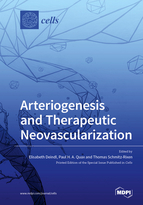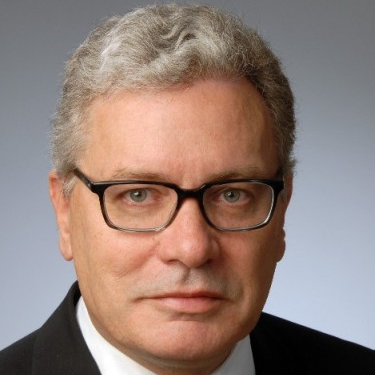Arteriogenesis and Therapeutic Neovascularization
A special issue of Cells (ISSN 2073-4409). This special issue belongs to the section "Cellular Immunology".
Deadline for manuscript submissions: closed (30 November 2019) | Viewed by 53983
Special Issue Editors
Interests: cardiovascular research; immunology
Special Issues, Collections and Topics in MDPI journals
2. Einthoven Laboratory for Experimental Vascular Medicine Leiden University Medical Center, 2333 ZA Leiden, The Netherlands
Interests: experimental vascular medicine; blood vessel; arteriogenesis
Special Issues, Collections and Topics in MDPI journals
Interests: collateral growth; arteriogenesis; diabetic paradox in vascular medicine
Special Issue Information
Dear Colleagues,
Arteriogenesis, also frequently called collateral formation or even therapeutic angiogenesis, comprises those processes that lead to the formation and growth of collateral blood vessels that can act as natural bypasses to restore blood flow to distal tissues in occluded arteries. Both in coronary occlusive artery diseases as well as in peripheral occlusive arterial disease, arteriogenesis may play an important role in the restoration of blood flow. Despite the big clinical potential and the many promising clinical trials on arteriogenesis and therapeutic angiogenesis, the exact molecular mechanisms involved in the multifactorial processes of arteriogenesis are still not completely understood. In this inflammatory-driven vascular remodeling process, many cell types, both vascular cells and immune cells, many cytokines and growth factors, as well as various noncoding RNAs or progenitor cells may be involved. Consequently, many questions regarding the exact molecular mechanisms involved in the regulation of the arteriogenic response still need to be answered, and these answers will contribute to defining new therapeutic options.
This Special Issue of Cells is devoted to all aspects of arteriogenesis and collateral formation. It will contain articles that collectively provide a balanced, state-of-the-art view on various aspects of arteriogenesis and the underlying regulation of vascular remodeling. We seek submissions of high-quality articles on all aspects of arteriogenesis, including but not limited to regulatory mechanisms, the cell types involved, state-of-the-art models, latest (pre)clinical developments, and therapeutic options.
Prof. Elisabeth DeindlProf. Paul H. Quax
Prof. Johannes Waltenberger
Prof. Thomas Schmitz-Rixen
Guest Editors
Manuscript Submission Information
Manuscripts should be submitted online at www.mdpi.com by registering and logging in to this website. Once you are registered, click here to go to the submission form. Manuscripts can be submitted until the deadline. All submissions that pass pre-check are peer-reviewed. Accepted papers will be published continuously in the journal (as soon as accepted) and will be listed together on the special issue website. Research articles, review articles as well as short communications are invited. For planned papers, a title and short abstract (about 100 words) can be sent to the Editorial Office for announcement on this website.
Submitted manuscripts should not have been published previously, nor be under consideration for publication elsewhere (except conference proceedings papers). All manuscripts are thoroughly refereed through a single-blind peer-review process. A guide for authors and other relevant information for submission of manuscripts is available on the Instructions for Authors page. Cells is an international peer-reviewed open access semimonthly journal published by MDPI.
Please visit the Instructions for Authors page before submitting a manuscript. The Article Processing Charge (APC) for publication in this open access journal is 2700 CHF (Swiss Francs). Submitted papers should be well formatted and use good English. Authors may use MDPI's English editing service prior to publication or during author revisions.
Keywords
- arteriogenesis
- natural bypass growth
- vascular remodeling
- neovascularization
- innate immunity
- shear stress
- mechanotransduction
- mechanosensing
- cell signalling cascades
- leukocytes










